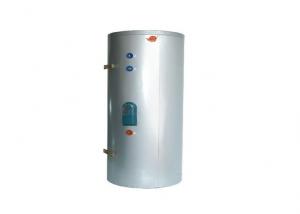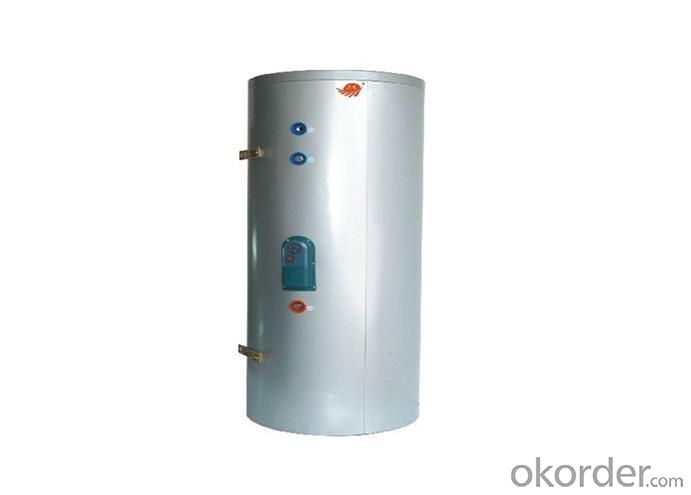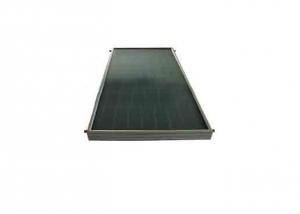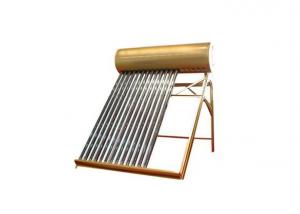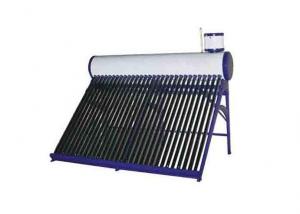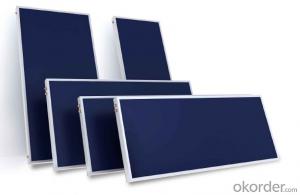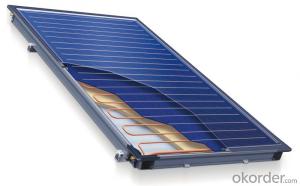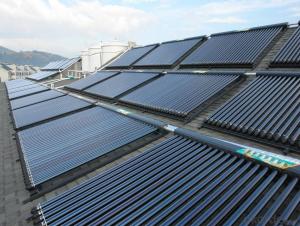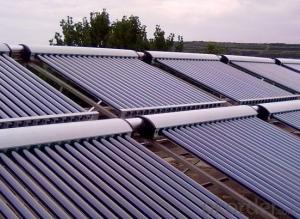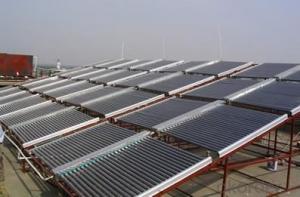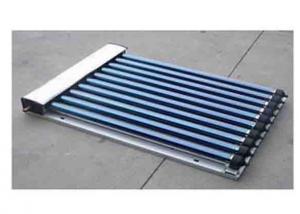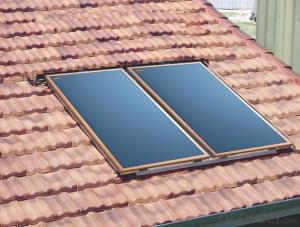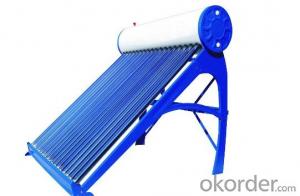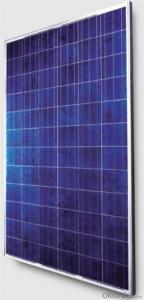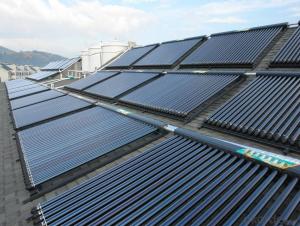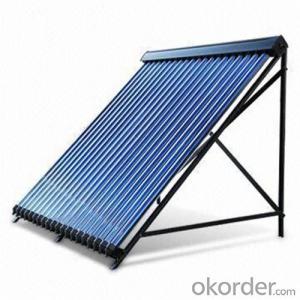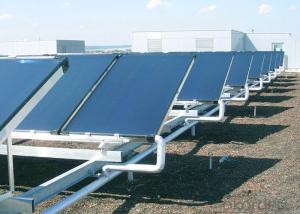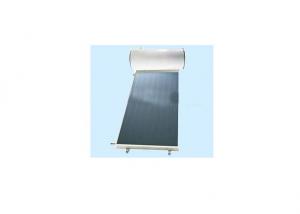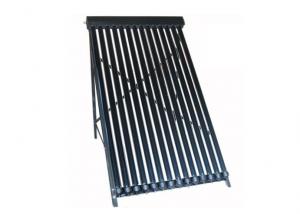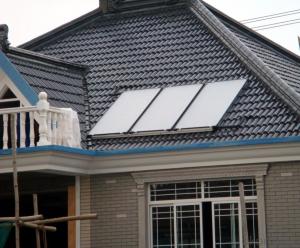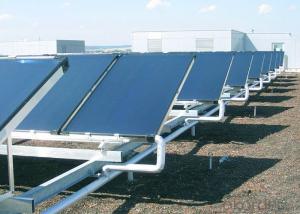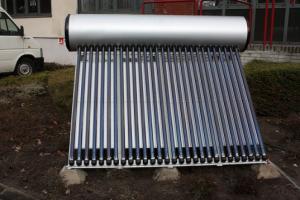Sunmaxx Solar Collectors Split Pressurized Water Tank
- Loading Port:
- China Main Port
- Payment Terms:
- TT or LC
- Min Order Qty:
- 2 Sets set
- Supply Capability:
- 1000 Sets per Month set/month
OKorder Service Pledge
OKorder Financial Service
You Might Also Like
Match with solar collector perfectly
High water heating efficiency
Good hot water preservation
Features:
1. Perfect hot water temperature preservation.
2. Matching with pressrized solar collector plays high solar energy absorption efficiency.
3. One copper coil tank, double copper coils tank, three copper coils tank are available.
Capacity (Liter) | Inner tank Thickness&diameter (mm) | Insulation Layer (mm) | Outer tank Thickness&Diameter&Height |
100L | φ1.2/Φ370 | 50 | φ0.55/Φ470/h1110 |
150L | φ1.2/Φ370 | 50 | φ0.55/Φ470/h1520 |
200L | φ1.5/Φ470 | 45 | φ0.55/Φ560/h1320 |
250L | φ1.5/Φ470 | 45 | φ0.55/Φ560/h1620 |
300L | φ1.5/Φ470 | 50 | φ0.55/Φ560/h1870 |
400L | φ2.0/Φ600 | 50 | φ0.55/Φ700/h1630 |
500L | φ2.0/Φ600 | 50 | φ0.55/Φ700/h1920 |
- Q: Are solar collectors suitable for retrofitting existing buildings?
- Yes, solar collectors are suitable for retrofitting existing buildings. They can be installed on rooftops or integrated into the building's facade, making them a viable option for adding renewable energy generation to older structures. Retrofitting with solar collectors can help reduce energy consumption and decrease reliance on traditional energy sources.
- Q: Can solar collectors be used in areas with limited access to quality control mechanisms?
- Yes, solar collectors can be used in areas with limited access to quality control mechanisms. Solar collectors are relatively simple and durable devices that require minimal maintenance. They can be designed and manufactured to withstand harsh environmental conditions and operate efficiently without the need for frequent monitoring or quality control mechanisms. Additionally, solar energy is a clean and renewable source of power, making solar collectors a viable solution for areas with limited access to reliable electricity grids or quality control infrastructure.
- Q: What is the difference between a flat plate and evacuated tube solar collector?
- The main difference between a flat plate and evacuated tube solar collector is in their design and efficiency. A flat plate solar collector consists of a flat, rectangular panel with a dark absorber plate, covered by a transparent cover. It absorbs sunlight and transfers the heat to a fluid circulating within the collector. On the other hand, an evacuated tube solar collector consists of several glass tubes, each containing an absorber plate and a vacuum layer. The vacuum layer reduces heat loss, making it more efficient in capturing and retaining solar energy. Overall, while both types of collectors can harness solar energy, evacuated tube collectors tend to be more efficient and perform better in colder climates.
- Q: Can solar collectors be used for generating electricity on smartphones?
- No, solar collectors cannot be directly used for generating electricity on smartphones. Solar collectors are typically used to convert sunlight into thermal energy, which can be used for heating water or air. However, there are solar panels available that can generate electricity from sunlight, and these can be used to charge smartphones and other electronic devices. These solar panels are designed to be portable and can be connected to smartphones via USB ports or other charging cables. They are particularly useful for outdoor activities or in areas where access to electricity is limited.
- Q: What is the payback period for a solar collector?
- The payback period for a solar collector refers to the amount of time it takes to recover the initial investment through energy savings or revenue generated from the system. The duration of the payback period can vary depending on factors such as the cost of the solar collector, energy prices, and the amount of energy it generates. On average, the payback period for a solar collector ranges between 5 to 10 years.
- Q: Can solar collectors be used for heating oil in industrial processes?
- Yes, solar collectors can be used for heating oil in industrial processes. Solar thermal systems can be designed to heat oil by using sunlight to generate heat, which is then transferred to the oil through a heat exchanger. This method can be particularly effective in industries that require heating processes, such as oil refineries, chemical plants, or manufacturing facilities. Solar collectors, also known as solar thermal panels, are designed to capture and convert sunlight into heat. They consist of a series of tubes or panels that contain a heat-absorbing material. When sunlight strikes the absorber material, it heats up, and the heat is transferred to a fluid flowing through the tubes or panels. This heated fluid can then be used directly or indirectly to heat oil in industrial processes. In the case of industrial processes that require heating oil, a solar thermal system can be integrated into the existing heating infrastructure. The solar collectors can be installed on rooftops or ground-mounted in areas with high solar exposure. The heat generated by the solar collectors can be used to preheat the oil, reducing the energy consumption of conventional heating systems. Solar thermal systems can provide significant energy savings and reduce greenhouse gas emissions in industrial processes that rely on oil heating. By utilizing renewable solar energy, industries can decrease their dependence on fossil fuels and contribute to a more sustainable energy future. However, it is worth noting that the effectiveness of solar collectors for heating oil in industrial processes may depend on various factors, including the availability of sunlight, the required temperature of the oil, and the specific needs of the industrial process. Therefore, a detailed analysis and engineering evaluation should be conducted to determine the feasibility and optimal design of a solar thermal system for heating oil in a specific industrial setting.
- Q: Can solar collectors be installed on rooftops?
- Yes, solar collectors can be installed on rooftops.
- Q: Can solar collectors be used in carbon capture and storage?
- No, solar collectors cannot be directly used in carbon capture and storage. Solar collectors are designed to convert sunlight into usable energy, while carbon capture and storage involves capturing and storing carbon dioxide emissions from industrial processes. Different technologies, such as chemical absorption or adsorption, are typically used for carbon capture and storage.
- Q: Can solar collectors work in cloudy weather?
- Yes, solar collectors can still work in cloudy weather, although their efficiency may be reduced. Clouds diffuse sunlight, causing less direct radiation to reach the collectors. However, modern solar technologies can still capture and convert this diffused light into usable energy, albeit at a lower rate.
- Q: Can solar collectors be used for generating electricity on electric vehicle charging stations?
- Solar collectors, like solar panels, have the ability to generate electricity at electric vehicle charging stations. These stations can be equipped with solar collectors either on their roofs or nearby to capture solar energy and transform it into usable electricity. Consequently, this electricity can be utilized to operate the charging stations and charge electric vehicles. This approach not only offers a renewable and eco-friendly energy source but also reduces dependence on the conventional power grid. Moreover, solar collectors can be combined with energy storage systems to store surplus solar energy, guaranteeing a consistent and dependable power source for electric vehicle charging stations.
1. Manufacturer Overview
| Location | Zhejiang, China |
| Year Established | 2004 |
| Annual Output Value | US$10 Million - US$50 Million |
| Main Markets | North America South America Eastern Europe Southeast Asia Africa Oceania Mid East Eastern Asia Western Europe |
| Company Certifications | ISO 9001:2000 ;CE ;Solar Keymark |
2. Manufacturer Certificates
| a) Certification Name | |
| Range | |
| Reference | |
| Validity Period |
3. Manufacturer Capability
| a) Trade Capacity | |
| Nearest Port | Shanghai,Ningbo |
| Export Percentage | 51% - 60% |
| No.of Employees in Trade Department | 6-10 People |
| Language Spoken: | English, Chinese |
| b) Factory Information | |
| Factory Size: | 10,000-30,000 square meters |
| No. of Production Lines | Above 10 |
| Contract Manufacturing | OEM Service Offered Design Service Offered Buyer Label Offered |
| Product Price Range | Average |
Send your message to us
Sunmaxx Solar Collectors Split Pressurized Water Tank
- Loading Port:
- China Main Port
- Payment Terms:
- TT or LC
- Min Order Qty:
- 2 Sets set
- Supply Capability:
- 1000 Sets per Month set/month
OKorder Service Pledge
OKorder Financial Service
Similar products
Hot products
Hot Searches
Related keywords
